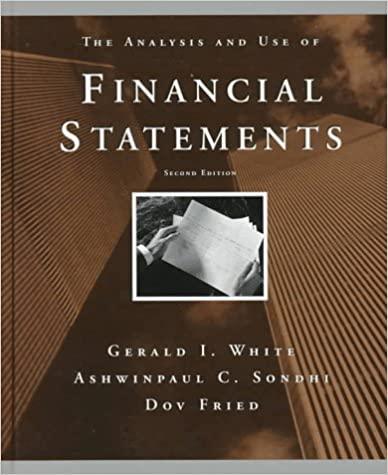Answered step by step
Verified Expert Solution
Question
1 Approved Answer
Income statement Sales 2 , 2 0 0 , 0 0 0 C . O . G . S 1 , 1 0 0 ,
Income statement
Sales
COGS
Gross profit
Depreciation
SG&A
Other Operating Expense
Operating income
Other Income
Interest Income
EBIT
Interest Expense
EBT
Tax Expense
ProfitLoss
EPS
DPS
Balance Sheet
Assets
Cash
Marketable securities
Accounts Receivable
post dated checks
Inventory
Total Current Assets
PP&E
LongTerm investments
Land
Total Long Term Assets
Total Assets
Liabilities
Accounts Payable
Due to banks
Accrued longterm debt
Total Current Liabilities
LongTerm loans
Deferred Taxes
Other Longterm Liabilities
Total LongTerm Liabilities
Total Liabilities
Shareholders' Equity
Paid in Capital
Retained Earnings
Total Shareholders' Equity
Total Liability and Equity
Note: Use the information provided by XYZ Pharmaceuticals LLC in the financial statements above to calculate the following financial ratios:
Liquidity ratio
Current ratio : Current asset current liabilities
Quick ratio : Current asset Inventory Current liabilities
Cash ratio : Cash Current liabilities
Net working capital to total assets : Net working capital Total assets
Interval measure : Current assets Average daily operating cost
Financial leverage ratio
Total debt ratio :Total asset Total equity Total asset
Debtequity ratio : Total debtTotal equity
Equity multiplier : Total asset Total equity
Longterm debt ratio: Longterm debt Longterm debt Total equity
Times interest earned ratio : EBIT Interest
Cash coverage ratio: EBITDepreciationInterest
Turnover ratio
Inventory turnover :COGS inventory
Days sales in inventory : days inventory turnover
Receivables turnover : Sales Accounts receivables
Days sales in receivables : days Receivables turnover
NWC turnover :sales NWC
Fixed asset turnover : sales Net fixed assets
Total asset turnover : Sales Total Assets
Profitability ratio
Profit margin: Net income Sales
Return on asset ROA :Net income Total asset
Return on equity ROE : Net income Total equity
ROE : Net incomeSales Sales Assets Assets Equity
Market value ratio
Priceearning ratio: Price per share Earning per share
PEG ratio : Price earning ratioEarning growth rate
Pricesales ratio : Price per share Sales per share
Markettobookratio : Market value per share Book value per share
Tobins Q ration : Market value of asset Replacement cost of asset
Step by Step Solution
There are 3 Steps involved in it
Step: 1

Get Instant Access to Expert-Tailored Solutions
See step-by-step solutions with expert insights and AI powered tools for academic success
Step: 2

Step: 3

Ace Your Homework with AI
Get the answers you need in no time with our AI-driven, step-by-step assistance
Get Started


